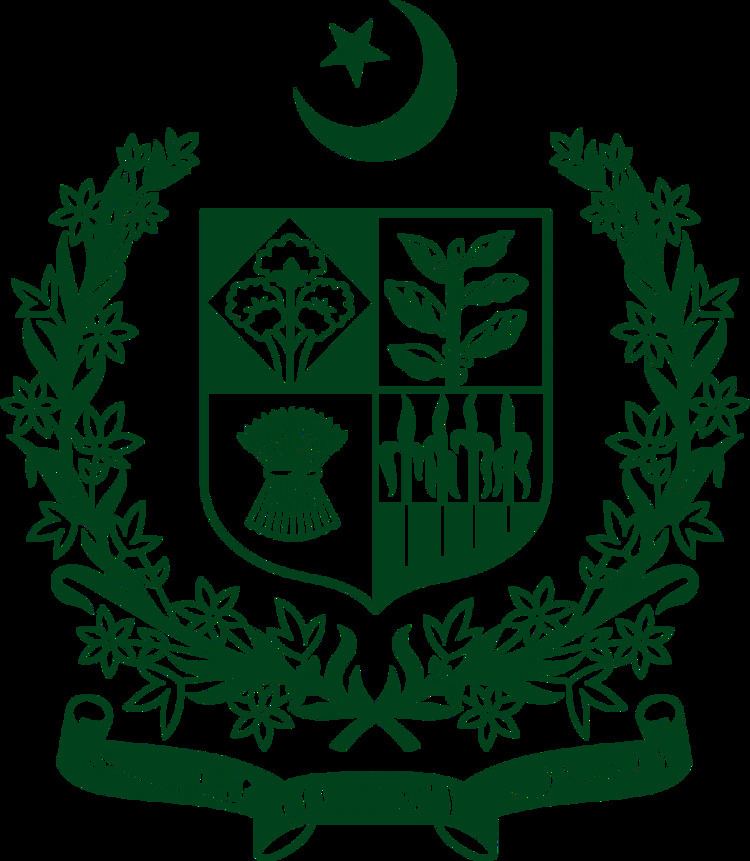 | ||
This is a list of the heads of state of Pakistan, from the foundation of Pakistan in 1947 to the present day.
Contents
- Map of Pakistan
- Monarch 19471956
- Governors General
- First Republic 19561958
- Military rule 19581971
- Second Republic 19711977
- Military rule 19781988
- Third Republic 19882001
- Military rule 20012008
- Fourth Republic
- References
Map of Pakistan
From 1947 to 1956 the head of state under the Indian Independence Act 1947 was the Monarch, who was the same person as the Monarch of the United Kingdom and of the other Dominions/Commonwealth realms. The Monarch was represented in Pakistan by the Governor-General. Pakistan became a republic under the Constitution of 1956 and the Monarch and Governor-General were replaced by a ceremonial President.
Monarch (1947–1956)
The succession to the throne of Pakistan was the same as the succession to the British throne.
Governors-General
The Governor-General was the representative of the monarch in Pakistan and exercised most of the powers of the monarch. The Governor-General was appointed for an indefinite term, serving at the pleasure of the monarch. After the passage of the Statute of Westminster 1931, the Governor-General was appointed solely on the advice of the Cabinet of Pakistan without the involvement of the British government. In the event of a vacancy the Chief Justice served as Officer Administering the Government.
First Republic (1956–1958)
Under the 1956 Constitution, the first constitution of the Republic of Pakistan, the President replaced the monarch as ceremonial head of state. The President was elected by Electoral College for a five-year term. In the event of a vacancy the Speaker of the National Assembly served as Acting President.
Military rule (1958–1971)
General Ayub Khan led a coup d'état which overthrown the President Mirza and his government. In 1962 there was a new Constitution which the President was given executive powers. The President was elected by the public for a five-year term. In the event of a vacancy the Speaker of the National Assembly served as Acting President.
Second Republic (1971–1977)
Military rule ended in Pakistan in 1971 after the 1971 War and the rules of the President was the same as the 1962 Constitution. Under the 1973 Constitution, the third and current constitution of the Republic of Pakistan, the President is the ceremonial head of state. The President was elected by Electoral College for a five-year term. In the event of a vacancy the Chairman of the Senate served as Acting President.
Military rule (1978–1988)
General Zia led a coup d'état which overthrown the Prime Minister Bhutto and his government. In 1978 Haq was given the presidency. In the event of a vacancy the Chairman of the Senate served as Acting President.
Third Republic (1988–2001)
Military rule ended in Pakistan in 1988 after the Death of Muhammad Zia-ul-Haq and the civilian government was restored. There was two periods of Semi-presidential rule, 1988–1993 and 1999–2007 and Parliamentary republic rule 1993–1997. In 1999 a coup d'état deposed Nawaz Sharif and his government, but the President was still in power until 2001. The President was elected by Electoral College for a five-year term. In the event of a vacancy the Chairman of the Senate served as Acting President.
Military rule (2001–2008)
General Pervez Musharraf led a coup d'état which overthrew Prime Minister Sharif and his government. In 2001 Haq was given the presidency. In the event of a vacancy the Chairman of the Senate served as Acting President.
Fourth Republic
Military rule ended in Pakistan in 2008 after the resignation Pervez Musharraf and the civilian government was restored. The President was elected by Electoral College for a five-year term. In the event of a vacancy the Chairman of the Senate served as Acting President.
